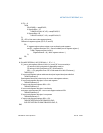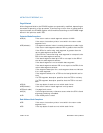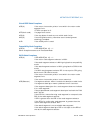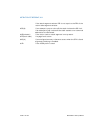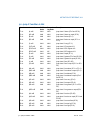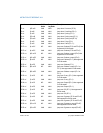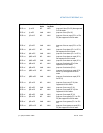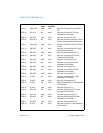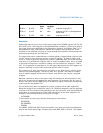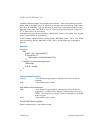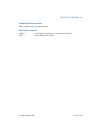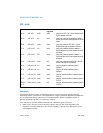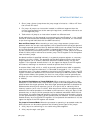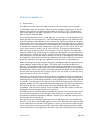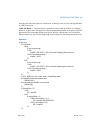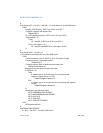
Vol. 2A 3-505
INSTRUCTION SET REFERENCE, A-M
Jcc—Jump if Condition Is Met
Description
Checks the state of one or more of the status flags in the EFLAGS register (CF, OF, PF,
SF, and ZF) and, if the flags are in the specified state (condition), performs a jump to
the target instruction specified by the destination operand. A condition code (cc) is
associated with each instruction to indicate the condition being tested for. If the
condition is not satisfied, the jump is not performed and execution continues with the
instruction following the Jcc instruction.
The target instruction is specified with a relative offset (a signed offset relative to the
current value of the instruction pointer in the EIP register). A relative offset (rel8,
rel16, or rel32) is generally specified as a label in assembly code, but at the machine
code level, it is encoded as a signed, 8-bit or 32-bit immediate value, which is added
to the instruction pointer. Instruction coding is most efficient for offsets of –128 to
+127. If the operand-size attribute is 16, the upper two bytes of the EIP register are
cleared, resulting in a maximum instruction pointer size of 16 bits.
The conditions for each Jcc mnemonic are given in the “Description” column of the
table on the preceding page. The terms “less” and “greater” are used for compari-
sons of signed integers and the terms “above” and “below” are used for unsigned
integers.
Because a particular state of the status flags can sometimes be interpreted in two
ways, two mnemonics are defined for some opcodes. For example, the JA (jump if
above) instruction and the JNBE (jump if not below or equal) instruction are alternate
mnemonics for the opcode 77H.
The Jcc instruction does not support far jumps (jumps to other code segments).
When the target for the conditional jump is in a different segment, use the opposite
condition from the condition being tested for the Jcc instruction, and then access the
target with an unconditional far jump (JMP instruction) to the other segment. For
example, the following conditional far jump is illegal:
JZ FARLABEL;
To accomplish this far jump, use the following two instructions:
JNZ BEYOND;
JMP FARLABEL;
BEYOND:
The JRCXZ, JECXZ and JCXZ instructions differ from other Jcc instructions because
they do not check status flags. Instead, they check RCX, ECX or CX for 0. The register
0F 88 cd JS rel32 Valid Valid Jump near if sign (SF=1).
0F 84 cw JZ rel16 N.S. Valid Jump near if 0 (ZF=1). Not supported in
64-bit mode.
0F 84 cd JZ rel32 Valid Valid Jump near if 0 (ZF=1).
Opcode Instruction 64-Bit
Mode
Compat/
Leg Mode
Description



